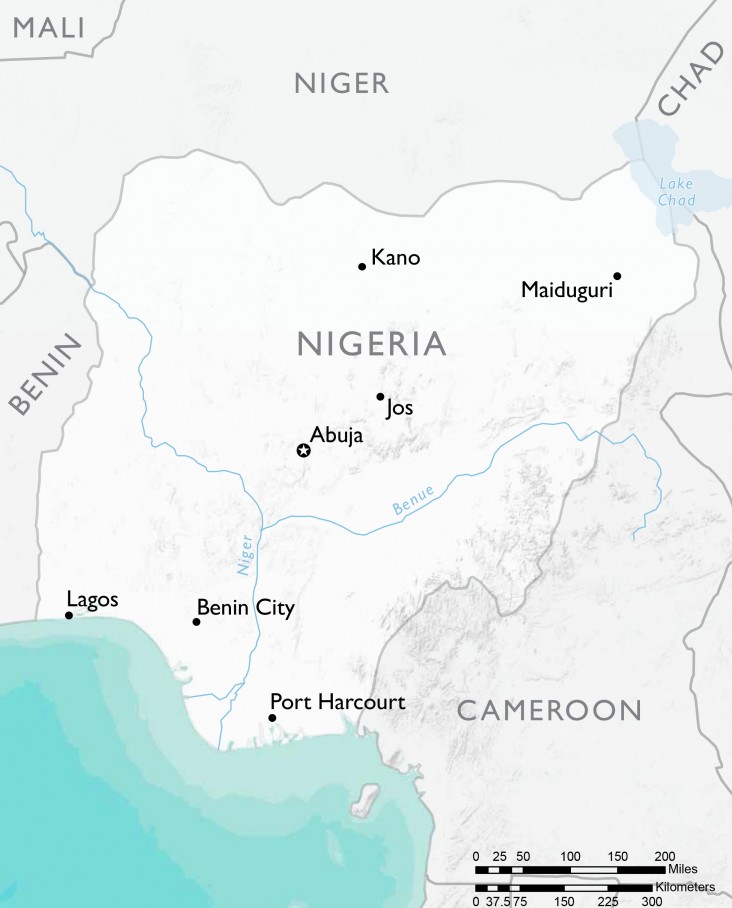Home » What We Do » Agriculture and Food Security » Food Assistance » Country Fact Sheets » Food Assistance Fact Sheet - Nigeria
- What We Do
- Agriculture and Food Security
- Democracy, Human Rights and Governance
- Economic Growth and Trade
- Education
- Ending Extreme Poverty
- Environment and Global Climate Change
- Gender Equality and Women's Empowerment
- Global Health
- Water and Sanitation
- Working in Crises and Conflict
- U.S. Global Development Lab

September 21, 2017
Situation
- Poverty and armed conflict in parts of Nigeria contribute to high levels of food insecurity and chronic malnutrition. As of August 2017, conflict in northeastern Nigeria had displaced more than 1.7 million people within the country and forced nearly 205,000 people to flee into neighboring Cameroon, Chad and Niger, straining food resources in the region.
- Boko Haram-related violence and large-scale displacement have disrupted income-generating activities such as agriculture, reducing household purchasing power and access to food. Populations in areas of northeastern Nigeria inaccessible to humanitarian assistance and markets are in dire conditions.
- Despite projected average to above-average yields for upcoming harvests in most areas of Nigeria, insecurity continues to limit agricultural production and food availability in the northeast, resulting in the persistent risk of Famine (IPC* Phase 5) levels of acute food insecurity in inaccessible areas. Furthermore, FEWS NET projects that Emergency (IPC Phase 4) levels of acute food insecurity will continue in most of Borno State and in conflict-affected areas of Adamawa and Yobe states until at least January 2018.
* The Integrated Phase Classification (IPC) is a standardized tool that aims to classify the severity and magnitude of food insecurity. The IPC scale, which is comparable across countries, ranges from Minimal (IPC I) to Famine (IPC 5).
Response
- USAID’s Office of Food for Peace (FFP) partners with non-governmental organizations (NGOs) and UN agencies to provide emergency food and nutrition assistance to conflict-affected populations in northeastern Nigeria.
- FFP supports NGOs to distribute targeted cash transfers and food vouchers to displaced persons and host community members in Adamawa, Borno and Yobe. This cash-based assistance is increasing household access to food while bolstering local markets and contributing to dietary diversity. FFP targets the most vulnerable populations, including pregnant and lactating women, children under the age of five and female-headed households.
- Through partner the UN World Food Program (WFP), FFP provides cash transfers and, in areas where markets are not functioning, food sourced from American, Nigerian and regional markets. FFP also supports WFP to provide nutrient-enriched supplementary food to children and pregnant and lactating women to prevent acute malnutrition.
- FFP supports complementary nutrition programming that helps families use locally available foods to meet nutritional requirements. Activities include radio messaging, small group meetings and cooking demonstrations. Through its partnership with the UN Children’s Fund (UNICEF), FFP is also providing in-kind, ready-to-use-therapeutic food for the treatment of severe acute malnutrition.
Food for Peace Contributions
Total Contributions:
| Fiscal Year | U.S. Dollar | Metric Tons |
| FY 2017 | $250.1 million | 112,051 MT |
| FY 2016 | $50.8 million | 2,270 MT |
| FY 2015 | $19.3 million | 430 MT |
Food Security Situation includes information from UNHCR, IOM, the Cadre Harmonis, and FEWS NET.
FY 2017 contribution based on funds obligated to date







Comment
Make a general inquiry or suggest an improvement.